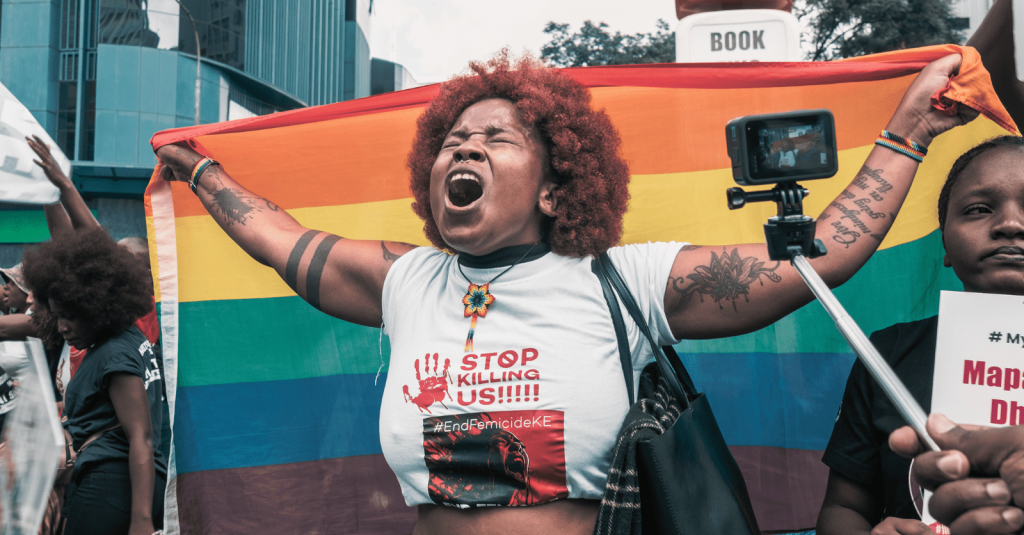Femicide, the intentional killing of women and girls, is a rapidly growing threat to women’s lives around the world, and Africa is no exception.
The alarming rise in femicide, the most brutal form of sexual and gender-based violence (SGBV) rooted in harmful social norms and misogynistic attitudes, has triggered protests and conversations on the need to urgently tackle the menace.
Chioma Agwuegbo, Convener of State of Emergency GBV and ED at TechHer, shed light on the disturbing trend on News Central TV’s Jasiri on Tuesday, September 10.
The women rights activist expressed concern about the widespread tendency to downplay the seriousness of femicide. According to her, some do not fully understand it, while others dismiss it by framing the discussion as a “gender war,” a term she finds unproductive and misleading.
She pointed to statistics showing that one in three women will experience violence in their lifetime. A significant percentage of women aged between 14 and 59 have reported facing violence.
News Central reports that the recent case of femicide in Nigeria involving 23-year-old Ayomide Adeleye, a philosophy student at Olabisi Onabanjo University, who abducted and brutally murdered 21-year-old Christiana Idowu, has highlighted the country’s escalating femicide crisis.
Agwuegbo urged people to consider who is responsible for this violence.
“We talk about violence against women as if it’s committed by spirits or aliens. In reality, men are often the perpetrators, both against women and sometimes against each other,” she said.
She referenced a disturbing case from France, where a man drugged his wife and invited 100 other men to engage in sexual acts with her. Only a few refused, and those who declined did not report the crime.
She also cited incidents in Nigeria, including a case from 2018 where a three-year-old girl was raped by her teacher, yet justice has still not been served. Another case involved a four-year-old raped by her headmaster, and when journalists inquired, the receptionist chillingly asked, “Which one?”—implying there were multiple victims.
Agwuegbo expressed frustration that, in a time when violence against women is on the rise, social media conversations often devolve into debates about “gender wars” rather than addressing the real issues.
She emphasised that discussions should focus on protecting women’s rights, especially as institutional safeguards are being rolled back globally.
“We cannot have conversations about gender wars when in one week globally, we are not just seeing violence against women, but an institutional reversal of the rights and protection of women. And the only thing that comes to people’s minds to discuss on social media is gender wars?” she queried.
Global Statistics and Findings on Femicide
A 2022 UN Women report on gender-related killings of women and girls showed five key findings;
1. Women and girls are most at risk from those close to them
In 2022, around 48,800 women and girls were killed globally by their intimate partners or family members, such as parents or siblings. This means over 133 women or girls are killed daily by someone from their family. Most femicides are committed by current or former intimate partners, making up 55% of such cases.
2. Femicide is a global issue
Femicide affects every country. In 2022, Africa saw the highest number of intimate partner or family-related killings, with around 20,000 victims. Asia had 18,400, the Americas 7,900, Europe 2,300, and Oceania 200. When adjusted for population size, Africa had the highest rate, with 2.8 women per 100,000 killed by a partner or family member.

3. The true extent of femicide is likely higher
Many cases of femicide go unreported due to insufficient information. National differences in criminal justice records mean not all gender-related killings are recognised. Femicide occurs in many contexts, including rape, sexual violence, harmful practices like female genital mutilation or honour killings, and violence related to hate crimes, trafficking, and armed conflict. Better data collection is essential to improve prevention and response efforts.
4. Some women and girls face greater risks
Certain groups of women, such as those in public roles like politics, human rights defenders, and journalists, face increased threats, which sometimes result in femicide. Indigenous women, such as those in Canada, are also disproportionately affected by gender-related killings. Comprehensive data is key to identifying those most at risk and informing prevention strategies.
5. Femicide can and must be prevented
Femicide and violence against women are not inevitable. They can be prevented through initiatives aimed at changing harmful social norms and ensuring communities reject violence against women. Early intervention, survivor support, and gender-sensitive justice are crucial. Reviews of gender-related killings, such as those in New Zealand, highlight the need for better responses from institutions, focusing on the well-being of victims and families.
More research is needed to understand why femicide rates rise in some areas and fall in others, helping inform better prevention strategies. Women’s rights organisations play a vital role in driving change, and greater financial support is needed to reduce and prevent these killings.


